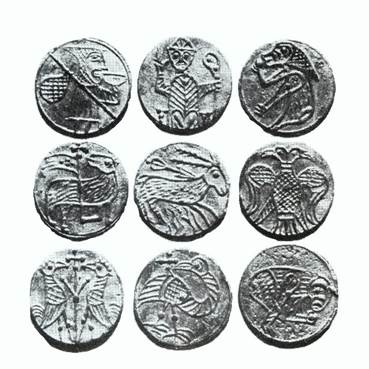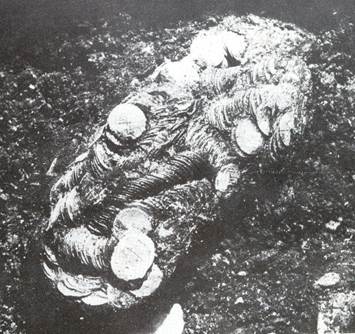
In all 2,061 pewter tokens
were uncovered, the majority of which contained a figure on
one side, depicting either a human or an animal (an armorial
device was found on the reverse). Some of the figures used
included an ecclesiastic with a crozier, a pilgrim carrying
a staff and drinking bowl, a bear-like animal, a deer
wounded by an arrow and pairs of confronted birds.
The tokens appear to date to the period
immediately preceding the introduction of the round farthing
by Edward I in 1279 AD. It is possible that pewter tokens
such as these were declared illegal before this
consignment of coins was put into circulation and this led
to their disposal
en masse
in the pit. |
These
distinctive pewter tokens were found by Brendán O’Riordáin during
his archaeological excavations at Winetavern Street in
Dublin. As its name suggests, this street was once famous
for its taverns and it is likely that the tokens were
originally used by local inn-keepers when normal coinage was
scarce.
They
were discovered inside a wood-lined cess-pit, where the
tokens had been discarded sometime in the 13th century. They
were closely clumped together, suggesting that the coins
were deposited within an organic bag, possibly a leather
purse or satchel.

|

